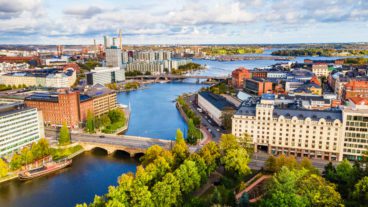In the urgent quest to combat climate change, humanity is increasingly turning to innovative approaches that go beyond traditional methods of carbon reduction. Among these, Nature-Based Solutions (NBS) stand out as a promising avenue, offering a multifaceted approach to both mitigate greenhouse gas emissions and adapt to the impacts of climate change. At the heart of natured based decarbonization solutions lies the concept of leveraging the inherent capabilities of ecosystems to achieve climate goals while simultaneously fostering biodiversity and enhancing societal well-being.
Nature-Based Solutions (NBS) are strategies and interventions for addressing environmental challenges by using natural ecosystems or mimicking natural processes. This includes things like reforestation and afforestation, wetland restoration, sustainable agriculture, and urban green infrastructure development. By tapping into nature’s power, NBS can help sequester carbon, make us more resilient in the face of climate impacts, regulate water cycles, and support biodiversity conservation.
The Role of Ecosystems in Decarbonization
Ecosystems play a critical role in regulating Earth’s carbon cycle – they’re both sources and sinks for carbon. Forests take up carbon dioxide in photosynthesis and store it in their biomass and soils. Conserving forests can greatly enhance this capacity to sequester carbon; meanwhile restoring degraded forests and implementing sustainable forest management practices also helps remove it from our atmosphere. Likewise, coastal ecosystems such as mangroves, salt marshes, and seagrasses sequester carbon several times faster than terrestrial forests do.
Advantages of Nature-Based Solutions
One standout advantage: NBS tend not to just focus on reducing emissions but also bring multiple benefits at once without any tradeoffs between them. For example tree planting creates new habitats for wildlife improves soil health supports local livelihoods through eco-tourism or sustainable forestry practices alongside capturing CO2 away from our atmosphere . Meanwhile green roofs cool down cities’ temperatures improve air quality, reduce stormwater runoff, and improve overall urban livability.
Challenges and Considerations
Similar to any other solution NBS present their own challenges too. Some of these include securing funds for the projects, navigating complex land tenure arrangements, addressing conflicting land-use priorities, and ensuring that benefits are distributed fairly. On top of all that the long-term effectiveness of NBS interventions will be dependent on factors such as ecosystem resilience climate change impacts and socioeconomic dynamics all which highlight a need for adaptive management approaches and robust monitoring and evaluation frameworks.
The Role of Policy and Collaboration
The full potential of Nature-Based Solutions requires strong policy support from governments who should incentivize investment in them along with integrating nature-based approaches into national climate strategies and development plans. To make these strategies work well it’s also important to have partnerships between governments civil society the private sector local communities so everyone’s knowledge can be pooled together for innovative solutions in NBS implementation
Nature’s Solutions could be the Holy Grail for fighting against climate change. By tapping into the inherent power that mother earth holds, we can do so much more than just reduce emissions. We could also improve biodiversity, ecosystem services, and social equality. It only makes sense that as we attempt to decarbonize our economy, that we would work with nature instead of against it to achieve such a goal



































